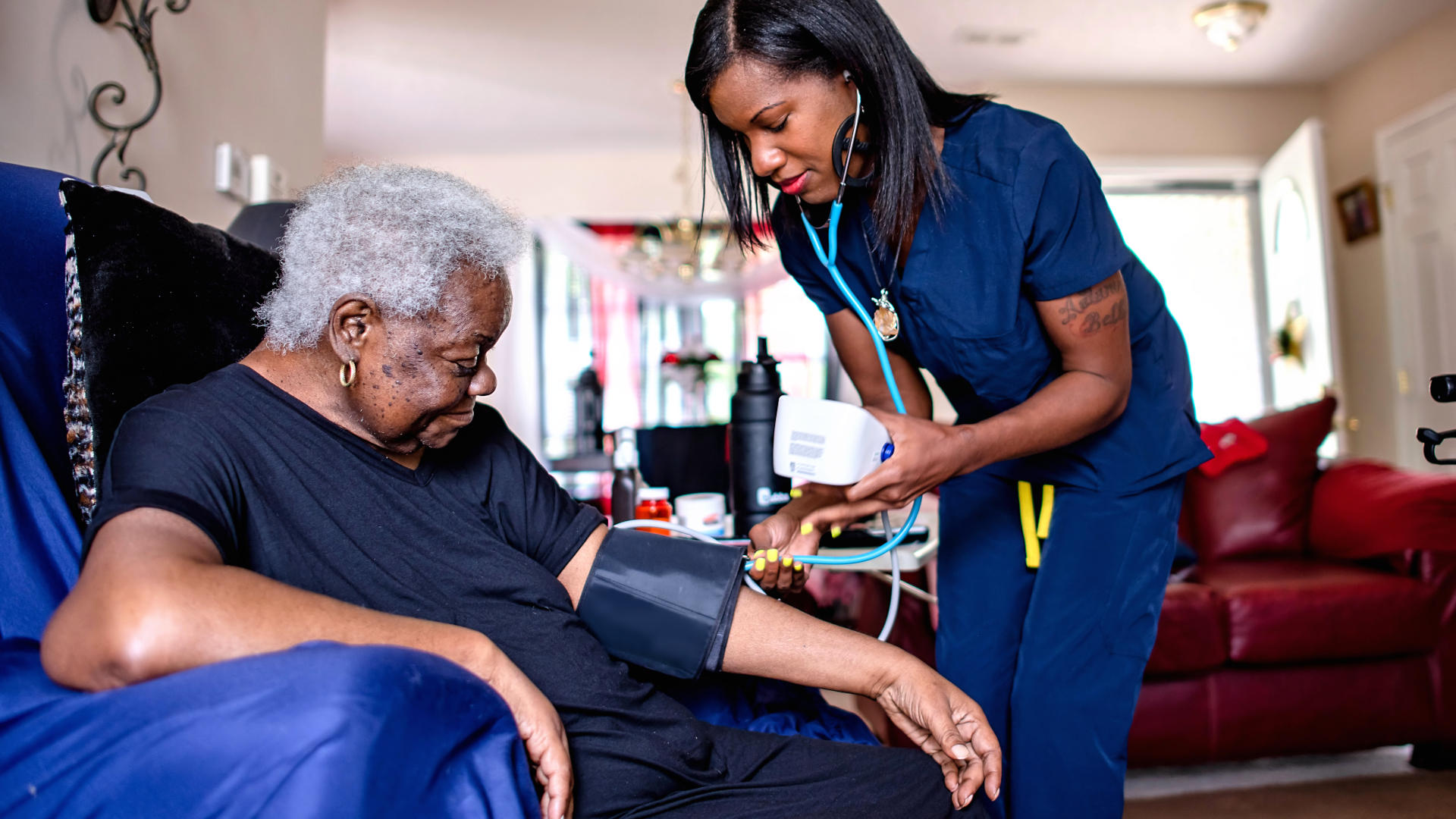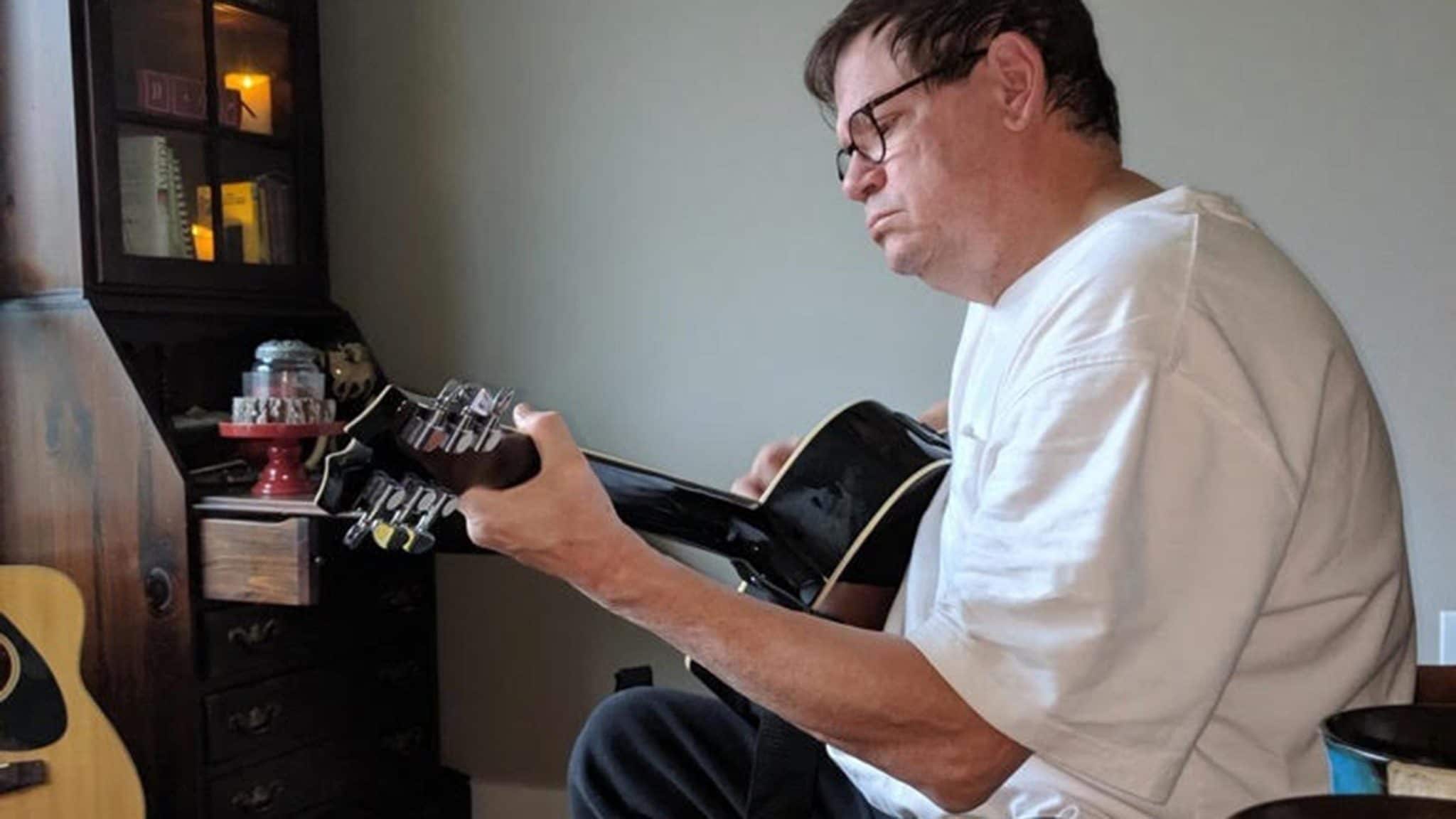In Two States, Transforming the Model for Palliative Care
“Being ill is like a full-time job,” said Andrew E. Kaufman, a 60-year-old author. Kaufman lives with myasthenia gravis, a neuromuscular disease, as well as other chronic conditions, and his self-care requires a lot of time — and communication. The cascade of his own needs “is frustrating and causes anxiety and a whole host of issues.”
Lucky for Kaufman, he lives in California, where he has help from a palliative care team. California is one of the first states in the country to require insurance companies that administer Medicaid benefits to fully cover palliative care services for eligible residents. Kaufman’s team, which is covered by Blue Shield of California, includes a social worker, a care coordinator (who is also a nurse), and a nurse practitioner, most of whom he is in touch with on a regular basis. They monitor his blood pressure and oxygen levels and assist with administrative tasks such as phone calls and emails to medical providers, which can be time-consuming and stressful.
This range of services isn’t what most people think of when they hear the phrase “palliative care.” Often misunderstood as end-of-life care, palliative care is often called a “constellation of services” that vary with the needs of the patient, not the prognosis.
“It’s … flexible based on individual needs [and] not concentrated on being in the hospital,” explains Kimberly Bower, a family physician and senior medical director of Blue Shield of California Promise Health Plan.
Approximately 150 million people in the U.S. have a chronic health condition, and two-thirds of those have two or more such conditions. Palliative care can offer them crucial support. When people are living with more than one chronic condition or serious illness, the health care system becomes a quagmire. “People in medicine tend to focus on the one organ system that they’re responsible for,” Bower said. “When you build a palliative care team that’s interdisciplinary, that team becomes this nice navigator of the health care system and the social safety net.”
A growing body of research shows that this form of care reduces physical discomfort and stress, improves quality of life for individuals and their families, and helps people stay at home rather than having to go to an emergency room. A 2010 study of patients living with advanced lung cancer, published in the New England Journal of Medicine, found that early palliative care improved their quality of life and mood. People who get early palliative care also received less aggressive treatment at the end of life — and lived longer.
When people are living with more than one chronic condition or serious illness, the health care system becomes a quagmire.
A study published in The Lancet in 2014 found that patients with advanced cancer who took part in early palliative care were more satisfied with their care; they also reported improved quality of life and symptom management. And a 2020 systematic review and meta-analysis published in JAMA found that adults with noncancerous chronic illness who received palliative care experienced a lower symptom burden and had fewer emergency department visits and hospitalizations.
Palliative care can also save money. The National Academy for State Health Policy estimates that states with comprehensive palliative care benefits for Medicaid users can expect to see cost savings of up to $1,165 per member per month, thanks to reduced utilization of inpatient services and emergency department visits. “It’s cheaper to send someone to your house than to send you to a hospital,” said Marian Grant, a senior regulatory advisor with the Coalition to Transform Advanced Care, or C-TAC.
Palliative care is poised to be a game changer for public health. Nearly 50 percent of states now include palliative care services for eligible Medicaid recipients, according to C-TAC. And in California and Hawaii, two paths are being forged toward wider palliative care access.
A growing body of research shows that palliative care reduces physical discomfort and stress, improves quality of life, and helps keep people out of the emergency room.
In 2014, California passed legislation requiring that eligible Medicaid beneficiaries receive access to palliative care. Kate Meyers, a senior program officer at the California Health Care Foundation, said the change created a first-of-its-kind payment model that other states learned from.
California’s dedication to palliative care dates back nearly two decades. In 2006, lawmakers required the California Department of Health Care Services to create a pediatric palliative care model that would enable eligible children and their families to receive in-home palliative care throughout a child’s illness. The new measure came about thanks in part to statewide philanthropic groups.
In 2014, the state expanded its commitment with a law that paved the way for coverage of palliative services by Medi-Cal, the state’s Medicaid agency. The list of qualifying health conditions was short — advanced cancer, congestive heart failure, COPD, and liver disease — but the possibility picked up steam. Even before the law went into effect, the private health insurer Blue Shield of California developed a palliative care coverage model for the 1.5 million members of the California Public Employees’ Retirement System receiving health coverage.
“The thinking was, it’s really going to be a benefit across all lines of CalPERS [state retirement system]; let’s go ahead and offer this,” said Bower, with Blue Shield of California. Today, Blue Shield of California covers palliative care with commercial and Medicare Advantage plans, which together cover 4.8 million members, and includes neurological and cerebral vascular diseases as eligible criteria.
More than 4,800 Blue Shield of California members have utilized palliative care services since 2018. Patient satisfaction surveys indicate that members appreciate and like the palliative care program, but Blue Shield of California also measures other data points, including quality of care. Blue Shield of California says the rate of hospital and emergency department utilization for members with palliative care services has decreased because the health care team is more aggressively managing symptoms.
Hawaii, meanwhile, is pioneering palliative care as a preventive service, tackling regulatory battles and reimbursement hurdles to list palliative care services in state Medicaid benefits. “Palliative care is a preventive service,” said Torrie Fields, whose consulting firm, TF & Associates, worked with Hawaii on its State Plan Amendment. “It doesn’t just save money; it actually prevents suffering.” Fields’ firm also worked with the state’s Medicaid agency, Med-QUEST Division, to develop and file a comprehensive palliative care benefit for Medicaid beneficiaries facing a serious illness.
Hawaii is currently waiting for approval from the national Centers for Medicaid and CHIP Services, which oversees rules for expanding Medicaid benefits. If approved, Hawaii would set a precedent for other states seeking to cover palliative care services.
As baby boomers age, the number of people living with serious illnesses is expected to increase exponentially in the coming decades.
But for all the creativity and tenacity of these new moves, there are still obstacles to wider palliative care coverage nationally. Developing and standardizing education and clinical training is also necessary for accelerating access to palliative care. Not all clinicians are going back to school to get a fellowship in palliative care, Fields said. “Providers [need] to start using evidence-based guidelines and certification standards to standardize the care they deliver for the entire population that they see,” said Fields. Standardization ensures both that providers can be reimbursed and that patients receive the same services across insurance and provider networks. “The hope and the need is for provider organizations to start delivering things that are relatively similar to one another so people understand what palliative care services are and can start to expect that of the system.”
If nothing changes, that system will face increasing strain. As baby boomers age, the number of people living with serious illnesses is expected to increase exponentially in the coming decades. Experts estimate that, for populous states, the kind of cost savings palliative care can capture could translate into hundreds of millions of dollars a year. And policymakers are beginning to pay attention: 24 states have established palliative care advisory councils or other advisory groups.
Even with policy changes, public knowledge remains a hurdle, according to Fields. Palliative care services are not yet a standard part of health care, and there are gaps among which services insurance providers pay for. “We need people and caregivers to know this is not what they are receiving today,” she said. Without the crucial piece of patient education, she said, “coverage [alone] does not equal access.”
Meredith Lidard Kleeman is a Baltimore-based freelance writer who specializes in writing about health care news and innovations. Her work has appeared in Clinical Practice Today from Duke Health, Chicago Booth Review, The Baltimore Sun, and The Washington Post, among others.











